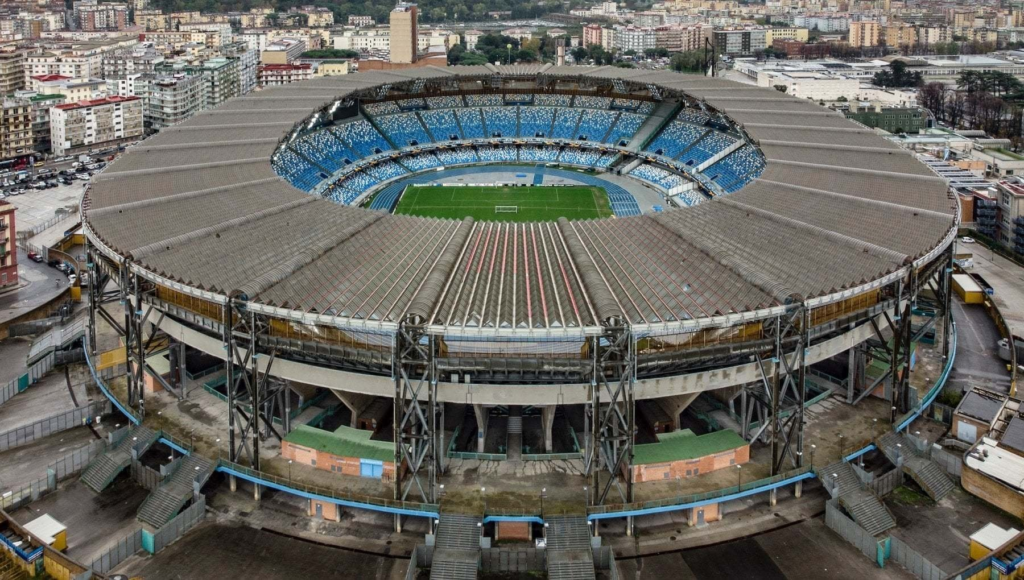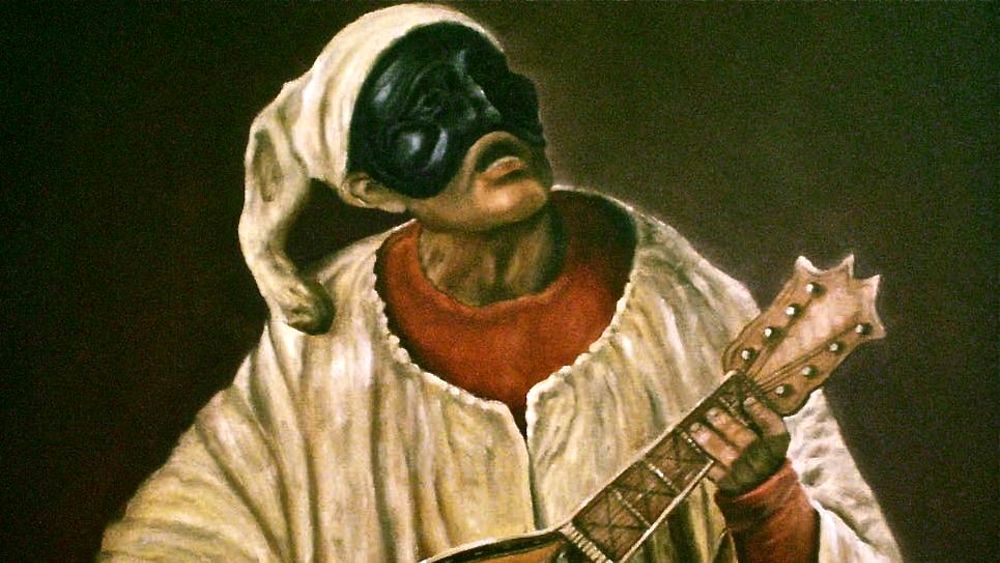Football is part of our culture and everyday life; the Diego Armando Maradona stadium, formerly São Paulo stadium, is the home of Società Sportiva Calcio Napoli that among the pleas of its fans wants to give the city the third Scudetto to about thirty years of the 1986/87 and 1989/90 seasons that saw the team triumph in the Serie A championship. Just in those years Maradona illuminated the Italian football with his class and his talent, skills that remain net of sports situations, with the blue jersey of the city of Vesuvius.
And if not by chance football is considered the «king of sports» of Italy, Maradona is historically considered the king of football in Naples as well as in his nation, Argentina.
Let’s get to know the Stadio Diego Armando Maradona and the footballer who has enchanted the city since June 30, 1984, when his purchase from Barcelona marks a turning point for both the Campania club and the entire Italian football. Because Maradona was perhaps the best player of his time and one of the best in the world in the history of football.
Much more than a sport. Football has become part of our culture and our identity inside and outside the territory because it is a powerful element of sociality.
In Italy, football has a long and glorious history, with teams that have won national and international titles and players who have become true icons. Among them is the legendary Argentine footballer Diego Armando Maradona who played for Napoli Calcio in the 80s and 90s.

repubblica
A legend called Diego Armando Maradona
Diego Armando Maradona was one of the greatest footballers of all time and a true legend of world football.
Born on October 30, 1960 in Buenos Aires (Argentina), Maradona began his football career at only 15 years old, when he made his debut beautiful club Argentinos Juniors.
He played for several teams during his career, including Boca Juniors, Barcelona, Napoli, Sevilla and Newell’s Old Boys. However, it was with Napoli Calcio that he achieved his greatest successes (winning two Scudetto titles, one UEFA Cup and one Coppa Italia) and became one with the city of Naples.
To make Maradona an extraordinary footballer and an icon of football was the union of technique, creativity, strength and charisma as well as an extraordinary humanity on and off the field.
Among the unforgettable moments of his career there are his performances that led the Argentine national team to the 1986 World Cup victory.

eurosport
The Stadium Diego Armando Maradona
The Stadio Diego Armando Maradona was inaugurated in 1959 with the name of San Paolo Stadium and has become one of the symbols of world football.
Let’s start from the beginning. The idea of building a stadium for Napoli Calcio dates back to the 1940s, but its construction took several decades.
The project was entrusted to the architect Carlo Cocchia, who created a modern and functional system that has become a reference point for the architecture of the stadiums built in the following years.
Over the years, the Stadio San Paolo has hosted numerous Napoli Calcio matches, including the team’s historic matches during the 1980s and 1990s (when Napoli won two Italian Champion titles and one UEFA Cup) . It was also the venue for the 1990 World Cup in Italy.
Between 2018 and 2019, thanks to the arrival of the XXX Universiade, the Diego Maradona Stadium underwent a renovation that cost part of the capacity but improved its functionality. Today, the stadium can accommodate about 54,000 spectators and is equipped with multifunctional gyms, spaces for the practice of martial arts, a basketball court, numerous eateries and shops.
In 2020, the municipality of Naples decided to change the name of the San Paolo Stadium to Diego Armando Maradona Stadium in honor of the Argentine champion who made Napoli a legendary team. This decision was greeted with enthusiasm by fans and all those who admire the talent and personality of the former captain who passed away in November of the same year.
It’s not just soccer. The structure of the stadium is also suitable for other sporting events and concerts of national and international artists, many stars of music have performed on its lawn, from Jovanottie Claudio Baglioni to Bruce Springsteen, Rolling Stones and U2.
Unfortunately, although there is an intention to make an exhibition with memorabilia, interactive tools and more, the tours do not include the Stadio Diego Armando Maradona. The plant can not be visited inside.

tvcity
Why is it also known as the Sun Stadium?
The Diego Maradona Stadium is also known as the «Stadium of the Sun» because of its geographical location.
It is located in Naples (Southern Italy) and enjoys a mild and sunny climate for most of the year; it is no coincidence that the privileged location in the south-west makes the main grandstand is reached by the sun during most of the day.
The name «stadio del Sole» is also appropriate to the enthusiasm and passion of the fans of Naples, visible in the flags that wave and in the choirs that sing.
Last but not least, the Stadio Diego Armando Maradona is one of the symbols of the city of Naples, which not by chance likes to call itself «the city of the sun».

napoli
Where is Diego Armando Maradona stadium and how to get there
Stadio Diego Armando Maradona is located in the Fuorigrotta district of Naples. There are different ways to get to the stadium, depending on the means of transport chosen.
By car, you can reach the stadium via the A56 motorway (Tangenziale di Napoli) exiting at Fuorigrotta or Agnano (where at the parking lot of Bagnoli/ Viale della Liberazione there is a Park&Go service). Around the stadium there are several parking spaces.
If you do not have the opportunity to arrive by car or you do not want to risk being bottled in traffic you can reach the stadium by means of transport: train (Naples Campi Flegrei Station with Trenitalia; Show Stop with the Cumana EAV Railway; Campi Flegrei Stop with Trenitalia Metro Service Line 2 from Piazza Garibaldi and Pozzuoli), bus (151 ANM direction Piazzale Tecchio from Central Station; NM:151-618-R7-C12 direction Piazzale Tecchio, line M1 and Monte di Procida EAV from Piazza Vittoria; 151 ANM direction Piazzale Tecchio or EAV line M1 direction from Molo Beverello) and (ANM line 1 and exchange at the Museum with the metro line Trenitalia line 2 from Vomero, Arenella, Secondigliano and Chiaiano).
Cover: campania


